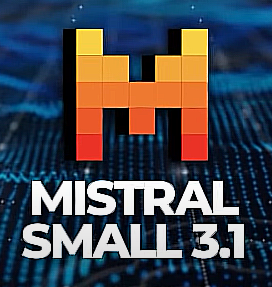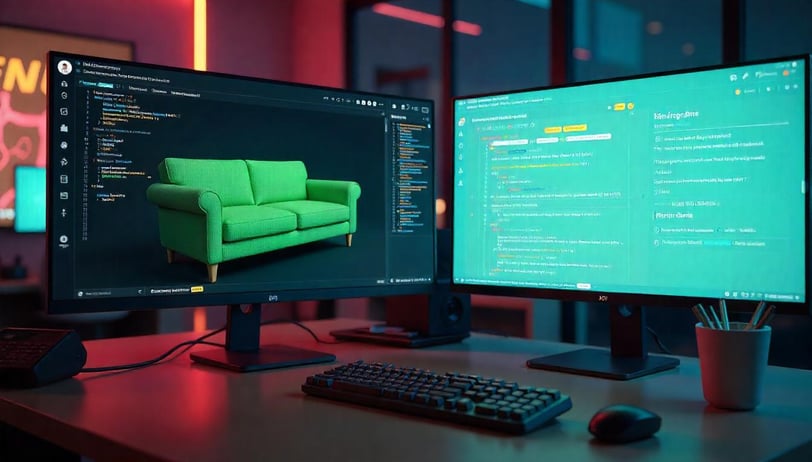
AI Revolution: Faster Models Beat GPT-4 Alternatives
Explore the AI revolution as new models surpass GPT-4 in speed and efficiency. Discover the latest advancements in AI technology and the race for smarter solutions.
NEWSBLOGSLATEST NEWS
AIVO News
3/19/20255 min read
Introduction


Artificial Intelligence is advancing steadily, but nowadays, it is not simply about building larger models. Speed, efficiency, and creativity are in vogue. From Paris to China to the U.S., a new round of innovation in AI development is becoming pertinent. Thus, here comes a summary of happenings such as Mistral Small 3.1, Tencent's revolutionary design tool, and Roblox's new 3D generation.
Mistral AI: Europe's Counterattack on Industry Giants


Paris-based Mistral AI is making waves with its latest release of Mistral Small 3.1. Despite its fewer parameters as compared to competition, this open-source model proves to be a highly capable one. Established in 2023, with its founders being former researchers of Google DeepMind and Meta, Mistral AI has already raised over $1 billion, thus giving the company a valuation in the region of $6 billion.
Small but Deadly
Standing at 24 billion parameters, Mistral Small 3.1 was architected to be simple and efficient. While models such as Llama 3.3 (70 billion params) and Quen 32B could arguably be bigger than it, in terms of efficiency, Mistral can perform on par or greater than them. It gives a multi-modal experience with a context window of 128,000 tokens, sustaining coherence on longtime texts.
Speedy and Easy to Access
Mistral Small 3.1 has another characteristic of being fast, providing responses almost instantly by generating up to 150 tokens a second. Not requiring large computing capacities like other models, Mistral can run on a single RTX 4090 GPU or a Mac laptop having just 32GB RAM.
Powered by AI Sustainability
Mistral AI aims to enhance algorithmic efficiency to cut costs and be environmentally friendly. Minimizing environmental costs by virtue of quick and efficient AI consumes fewer resources, thus rendering all the much-needed work.
Open-Source Innovation
In keeping with its spirit of open-source, Mistral AI licensed Small 3.1 under Apache 2.0, signaling that developers can modify and commercialize it without hindrance. This builds a culture of collaboration and encourages innovation in the AI community.
Much as open-sourcing makes monetizing harder, Mistral AI is seeking monetizing avenues through enterprise solutions and domain-specific models and other collaborations. They have also built a diversified product line so far, including:
Mistral Large 2: A flagship model for high-end applications.


PicStrawl: A multimodal AI for image generation.
CodeStrawl: A specialized code generation model.
LessMistrawl: Optimized for edge devices.
Saba: Focused on Arabic language and culture.
Mistral OCR: Converts PDFs into markdown files, rendering them easier to process.
Mistral AI proves its competitive performance in the benchmarks, having reached the score of 81% on the MMLU (Massive Multitask Language Understanding) test. Human evaluations show it is comparable to much larger models in coding, mathematics, general knowledge, and instruction following.

Hanyuan 3D 2.0: Tencent's Giant Leap in 3D Design


In China, Tencent has launched Hanyuan 3D 2.0, a groundbreaking AI model intended to rewrite the rules of 3D design. Since its launch in November 2024, it has garnered widespread attention among designers and makers of games.
Instantaneous 3D Generation
Hanyuan 3D 2.0 can create high-quality 3D images from text and image prompts within seconds. The system works as fast as it does consistent, providing results that are indeed coherent with and attractive to the user's eyes. This is further supportive to creators who wish to put together designs with a coherent feel.
Chinese AI Rising


Tencent is increasingly claiming a seat as a major player in the world of generative AI, a world so far dominated by the United States. While facing competition from ByteDance and its V Omniverse model, Tencent's innovations herald the dawn of fast-growing AI in China.
Earlier this year, Tencent also introduced Hanyuan Turbo S, a super-fast AI model to further consolidate its standing in the area of 3D content generation.
Roblox's Cube 3D: An Upsurge in Game Development


On the other hand, in the U.S., Roblox has made a huge leap in generative AI through its open-source model Cube 3D. Intended for the developer crowd, Cube 3D can generate objects, environments, and full-blown scenes through straightforward text prompts.
Mesh Generation API


Currently in beta, the Mesh Generation API enables developers to produce 3D assets almost instantaneously. All that is required is a prompt that says: "a vintage green couch with clean lines and velvet material" and in seconds, a 3D model appears.
Native 3D Data Approach
Unlike those models that reconstruct 3D objects from 2D images, Cube 3D implements native 3D data. It tokenizes aspects of 3D shapes, an autoregressive transformer predicting subsequent shape tokens. In this way, 3D model generation presents high accuracy alongside easy scalability.
Toward 4D Creation


In addition, Roblox is working on the realization of 4D generation, where objects interact in real-time with the players and the environment. Entire scenes can thus be described by the developers, allowing Cube 3D to generate objects and determine their positions and interactions.
The Global AI Landscape: Shifting Power Dynamics


The breakthrough achieved by Mistral AI, Tencent, and Roblox points towards a wider transformation in AI development. The U.S. individuals have long been dominating the AI world; however, Chinese firms have started catching up quite fast. China is fast becoming a key player in the generative AI area with technologies like Hanyuan 3D 2.0 and ByteDance's V Omniverse.
Evidence for Europe's determination for digital sovereignty appears through the support of companies such as Mistral AI. President Macron even urged citizens to use Mistral's chat assistant instead of ChatGPT. With the help of partnerships with Microsoft, IBM, and the French Army, Mistral AI is on track to becoming a giant player.
It is no longer simply a race to enter the largest AI models. Companies are proving that small, efficient, and open-source models can match big proprietary systems in performance. The future of AI for Mistral-light, Tencent-quick, and Roblox-immersive is looking powerful and accessible.
#ai | #aivonews | #latestainews | #latestainewsandupdates | #ainews | #aistalk | #aiGAMING| #chatgpt | #openai | #AISIMULATOR| #aivonews.com |AIRevolution:FasterModel BeatGPT-4Alternatives| #humanoidrobots | #dobot | #AIANDRObotics | #mistral3.1 | #mistralsmall3.1
Stay updated with the latest AI news and tools.
Connect
© 2024. All rights reserved.
